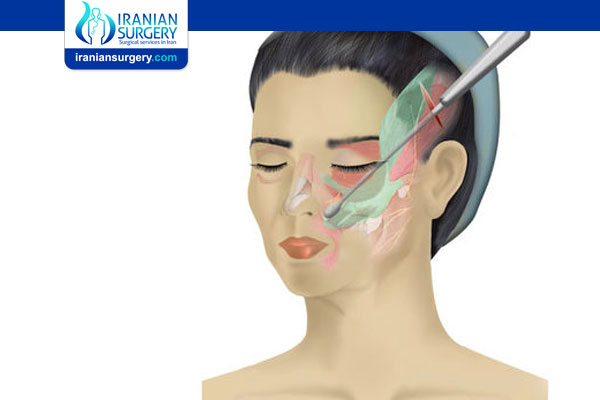Mid-Facelift (Cheek Lift)
Mid-Facelift (Cheek Lift)
What is a Mid-Facelift?
A mid-facelift is sometimes called a cheek lift. The surgical procedure helps tighten saggy cheeks and can smooth laugh lines, but it doesn’t target the chin or forehead area the way a full facelift does.
To perform a mid-facelift, a surgeon makes two small incisions by the hairline, then tightens the muscles and manipulates the fat pads under the skin.
A mid-facelift can be a great option for people who want a more youthful-looking appearance, prominent-looking cheekbones, and brighter eyes, and don’t want work done on their jawline and forehead.
Most people are very satisfied with the results of a mid-facelift
About Iranian Surgery
Iranian surgery is an online medical tourism platform where you can find the best cosmetic Surgeons in Iran. All cosmetic surgeons working with Iranian Surgery specialize in plastic surgery and perform cosmetic surgeries in well-equipped hospitals, so after Mid-Facelift (Cheek Lift) in Iran you will face the least possible complications.
For more information about the cost of Mid-Facelift (Cheek Lift) in Iran and to schedule an appointment in advance, you can contact Iranian Surgery consultants via WhatsApp number 0098 901 929 0946. This service is completely free.
Before Mid-Facelift (Cheek Lift)
How does a mid-facelift work?
As skin ages, it starts to lose its natural ability to snap back into place. This can cause looser skin and sagging.
And as the skin ages, so do the structures beneath it, like muscles, ligaments, fat, and even bones.
A mid-facelift works by actually tightening the muscles behind the skin, so the skin looks tauter. The surgeon will also reposition fat so the area under the eyes looks less hollow.
Targeted areas for a mid-facelift
A mid-facelift targets the area between the upper corner of the mouth to the corners of the eyes.
The most noticeable difference will be in the cheek area, where the skin will look tighter.
Are there any risks or side effects?
Most cosmetic surgery carries at least some risk, including mid-facelifts.
Potential risks and side effects include:
. Bruising
. Prolonged swelling
. Anesthesia risks
. Infection
. Pain
. Scarring
Call your doctor if your pain is getting worse or your swelling isn’t subsiding after your mid-facelift.
Preparing for a mid-facelift
Your surgeon should tell you exactly what to do to prepare for your mid-facelift. Usually, this involves avoiding:
. Alcohol
. Smoking
. Blood-thinning medications, including ibuprofen and herbal supplements
You’ll likely need to spend the night in the hospital, so pack a bag of the things you may need, and arrange a ride home for the next day.
If possible, arrive at your appointment with clean, dry skin.
During Mid-Facelift (Cheek Lift)
Procedure for a mid-facelift
During a mid-facelift, your surgeon will manipulate muscle and lift fat pads under the skin to:
. Help smooth out creases and wrinkles
. Remove excess skin that may be sagging
. Lift and tighten the facial skin
. Plump the area around the eyes
After Mid-Facelift (Cheek Lift)
What to expect after a mid-facelift
Full recovery from a mid-facelift may take several months, but most people will see full results in 2 to 3 months.
Refrain from strenuous physical activity or exercise for 3 weeks after the surgery. Your surgeon may advise you to sleep slightly elevated on your back.
You’ll likely have to return to your surgeon about a week after surgery to have the stitches removed, unless your surgeon uses sutures that dissolve on their own.
The incision by the ears and hairline shouldn’t be noticeable once it’s fully healed.
Mid-facelift vs. full facelift
A mid-facelift and a full facelift are similar procedures, but a full facelift is more invasive. It targets the face from the neck to the forehead. A mid-facelift targets the space between the upper lip and the corner of the eyes.
A full facelift is best for targeting wrinkles in the forehead and looser neck skin, while a mid-facelift helps tighten the skin around the cheeks (though a full facelift will do that, too).
Both procedures require an incision at the hairline and typically around the ear in an “S” shape.
The initial recovery time for a full facelift is similar to that of a mid-facelift, though the incision may be larger in a full facelift.
After a full facelift, you should be able to resume normal activity within 2 weeks, with full results within 2 or 3 months.
Source:
. https://www.healthline.com/health/cosmetic-surgery/mid-face-lift


